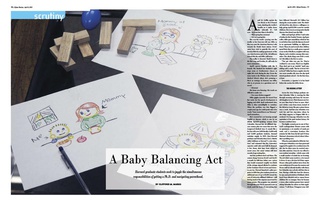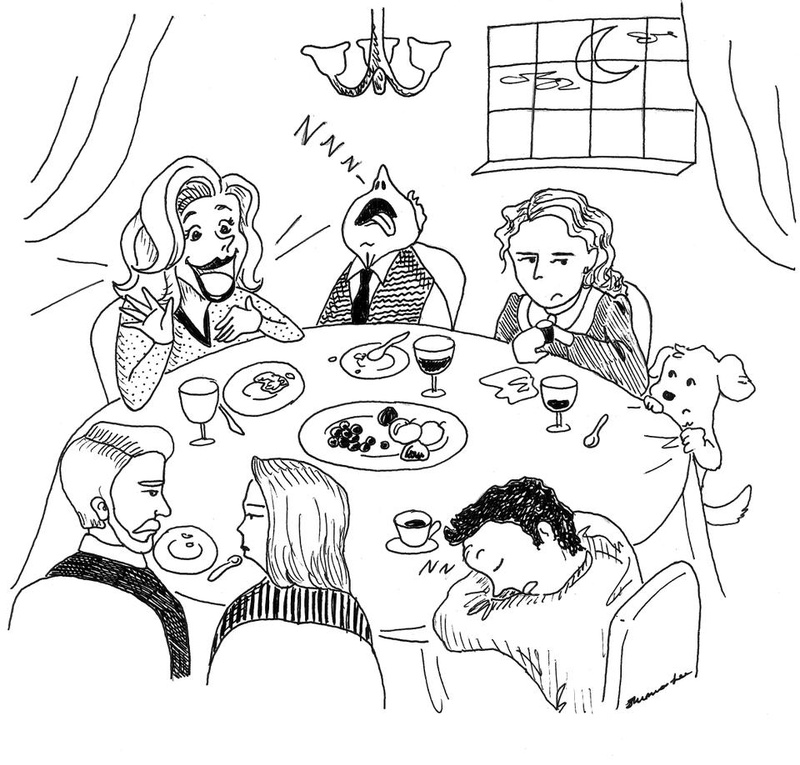The merest opening of a common buttercup on a piece of wasteground in the light of an ordinary day," says Bernice Bayoude, a character in Ali Smith’s latest novel, "the mere blowing along a road of a piece of litter, is enough to dispel the so-called truth of every single thing online. But we’re forgetting how to know what’s real. That’s the real problem." It’s an idea that pervades the novel, entitled "There but for the"—that our experiences in life are fleeting, but that transient things can change us forever. The novel follows the lives of four loosely connected characters. The work vividly conveys a loose web of colliding moments, some of which touch its character’s souls. It’s a moving approach, and "There but for the" strikes a careful balance between witty, mild satire of the alienation of contemporary culture and serious inquiry into human thought and connection. For all its thoughtfulness, though, "There but for the" is rarely cohesive enough to achieve the elegiac aesthetic and muscular critical inquiry for which it strives. Rather, its restless questing, intentionally or not, leaves Smith’s troubling meditations empty. The novel is ostensibly about a man named Miles Garth, who leaves the table during a dinner party to lock himself in the guest room for several months, bewildering the host of the dinner party into feeding him under her guest room door. He never explains his reasons for doing this. Many people conclude he’s some kind of messiah and set up an elaborate operation to feed him from the backyard, offering psychic readings to passers-by in the meanwhile. While this scenario has clever, ironic overtones, it also has the potential to get tiresome fast; thankfully, the foreground of the novel is far more concerned with the interiorities of four characters, linked—though none very intimately—to Miles Garth. It traces their fleeting connections with him, as well as the flashbacks and later choices that these meetings inspire. Although scattered, these interactions have the potential to be truly stunning. One woman recalls the death of her daughter, who had known Miles in grade school; another remembers a time she met him at summer camp when they were schoolchildren. One mentions an essay Miles had written in secondary school, which reflects on how in the future, everyone has been "onced" by life. When a person is "onced," a particular moment becomes imprinted in their eyes forever; thus, the boy in Miles’ essay looks in his mother’s eye and sees "a curly-haired eighteen-year-old called Albert, which wasn’t his father’s name, and who’d once, when she was sixteen and on holiday in the Isle of Man, whistled a tune every time he passed underneath her chalet window." In his father’s eyes, he sees "a double image of a dark and deep and still pool." It’s a beautiful idea, and perhaps explains the structure of the narrative, which insists on revealing its characters through discrete, seemingly irrelevant recollections—a first kiss in a park, a daughter dying—rather than through unified life stories. It also powerfully suggests the malaise of modern life, which with Smith seems so concerned. We are all so inundated with connection, she insinuates, that these chance collisions and brief memories have replaced longer, sustained narratives as the texture of our lives. Apt as "There but for the" may be, though, it ultimately fails to satisfy. This could be because of the sheer volume and hyperactivity of the book’s meditations: it jumps from Internet porn, to the etymology of the word "but," to Viking history, and back again. Yet perhaps its true failure lies in its focus on alienation, which never achieves emotional depth. This might be Smith’s intent. The thoughts the book expresses on everything it considers, Internet porn included, are fascinating and edgy, often ricocheting off the narrative and offering genuinely enlightening perspectives on the action. But these musings read like conversation at a hyper-intellectual, over-caffeinated dinner party, rather than presenting themselves as the true essences of people’s lives. Emotional pain is suggested, but never explored with precision or insight. We never see how people are changed by their suffering, or by their "onces." As a satire, it’s pleasant. As a portrait of contemporary culture, it’s quite brilliant—but then again, maybe it’s too accurate. Smith’s criticism of the emptiness and superficiality of modern culture is incisive, but by importing these qualities into her fiction, she only contributes to the problem. —Staff writer Aisha K. Down can be reached at aishadown@college.harvard.edu.
Read more in Arts
Publishing Words: The Future of BooksRecommended Articles
-
 A Baby Balancing Act
A Baby Balancing Act -
 Chickwich Challenge Profiles: Helen E. Bradshaw ’11
Chickwich Challenge Profiles: Helen E. Bradshaw ’11 -
 Running Routes
Running Routes -
 Lin Locks Up Roster Spot
Lin Locks Up Roster Spot -
Harvard Basketball Caught TravellingAs Harvard wound down for the summer, some of its bigger basketball names were just getting started with an offseason ...
-
J-Term: No Rest For Harvard's Winter SportsRead on to see when your favorite team will be coming to a town near you!














